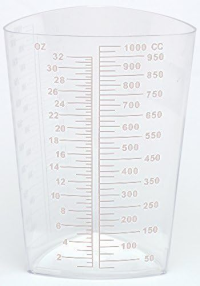T
TurboCharcha
Speak, friend, and enter
- Feb 20, 2025
- 76
I'm making this post because I'm worried that people might be testing their SN wrongly. If I'm right, then tests done with the method explained in the SN bible (and everywhere else I have found on this site) will lead to an underestimation of the tested SN purity. This, in turn, may worsen people's anxiety about their CTB, or maybe lead them to increase the dose of SN they ingest (because they could think their SN is less pure or effective than it actually is), possibly increasing the chance of vomiting. In this post, I explain what I believe is missing from the testing procedure, but I'll repeat it here in more detail because I think it is really important. The post said:
Hey, I noticed something that is really important and I don't see being considered: test strips and kits measure concentration of nitrite ions (NO₂⁻), not sodium nitrite (NaNO₂). So this testing method should account for the proportion of nitrite in sodium nitrite. The molar mass of NaNO₂ is about 69 g/mol, while the molar mass of NO₂ (and of NO₂⁻ because the mass of an electron is negligible compared to the mass of protons and neutrons) is about 46 g/mol. Therefore, the actual mass of NO₂⁻ that you are putting into the water is 46/69=0.666 times the mass of NaNO₂ that you weigh on the scale.
I want to emphasize that the result one would get without accounting for the dilution of SN (i.e., using the method in the SN bible) would be wrong! In fact, it would be about one third less than what one would expect with a 100% pure SN. For example, if you dissolved 5g of SN into 1L of solution, then extract 2mL from that solution and dilute it to 1L, you would have a concentration of 10mg/L of NaNO₂ (SN), but the concentration of nitrite ions (NO₂⁻), the actual molecule the test strips and kits measure, would be one third less, or two thirds, of that: 10mg/L - (1/3)x10mg/L = (2/3)x10mg/L = 6.666mg/L.
Now imagine you have a test strip that measures between 0mg/L and 10mg/L of nitrite ions (NO₂⁻) in 2.5mg/L intervals. That is, it has colors for 0, 2.5, 5, 7.5 and 10. With the solution in the current example, one would get a color closer to 7.5mg/L (from below) than the wrongly expected 10mg/L. What would you think and feel if this happened to you? I would feel extremely frustrated and even more afraid of my CTB.
Someone please double check my math and chemistry and feel free to correct me. If, however, the information I have written is correct, there would need to be an effort to correct the SN testing info on this site, at least in the SN bible.
Hey, I noticed something that is really important and I don't see being considered: test strips and kits measure concentration of nitrite ions (NO₂⁻), not sodium nitrite (NaNO₂). So this testing method should account for the proportion of nitrite in sodium nitrite. The molar mass of NaNO₂ is about 69 g/mol, while the molar mass of NO₂ (and of NO₂⁻ because the mass of an electron is negligible compared to the mass of protons and neutrons) is about 46 g/mol. Therefore, the actual mass of NO₂⁻ that you are putting into the water is 46/69=0.666 times the mass of NaNO₂ that you weigh on the scale.
I want to emphasize that the result one would get without accounting for the dilution of SN (i.e., using the method in the SN bible) would be wrong! In fact, it would be about one third less than what one would expect with a 100% pure SN. For example, if you dissolved 5g of SN into 1L of solution, then extract 2mL from that solution and dilute it to 1L, you would have a concentration of 10mg/L of NaNO₂ (SN), but the concentration of nitrite ions (NO₂⁻), the actual molecule the test strips and kits measure, would be one third less, or two thirds, of that: 10mg/L - (1/3)x10mg/L = (2/3)x10mg/L = 6.666mg/L.
Now imagine you have a test strip that measures between 0mg/L and 10mg/L of nitrite ions (NO₂⁻) in 2.5mg/L intervals. That is, it has colors for 0, 2.5, 5, 7.5 and 10. With the solution in the current example, one would get a color closer to 7.5mg/L (from below) than the wrongly expected 10mg/L. What would you think and feel if this happened to you? I would feel extremely frustrated and even more afraid of my CTB.
Someone please double check my math and chemistry and feel free to correct me. If, however, the information I have written is correct, there would need to be an effort to correct the SN testing info on this site, at least in the SN bible.





